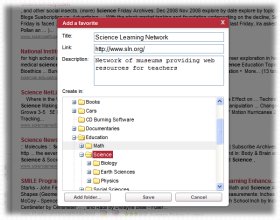|
Education
Web
Viewing 1-4 of 4 total results
and other images. 3. Students will locate major political and physical features of the United States and the world. 1. Atlases, online databases, topographic maps 2. Thematic, topographic, aerial photos, satellite images 3. Countries, rivers, topographic features, largest...
1
0
and other images. 3. Students will locate major political and physical features of the United States and the world. 1. Atlases, online databases, topographic maps 2. Thematic, topographic, aerial photos, satellite images 3. Countries, rivers, topographic features, largest cities GEOGRAPHY GRADES 9-12 Strand Sub-Strand Standards Benchmarks Examples V. GEOGRAPHY B. Essential Skills The student will use maps, globes, geographic information systems, and other databases to answer geographic questions at a variety
48
0
http://education.state.mn.us/mdeprod/groups/Standards/documents/LawStatute/006219.pdf#page=48
education.state.mn.us/mdeprod/groups/Standards/documents/LawStatute/00621...
Minnesota Department of Education May 15, 2004, 9:45 p.m. 48 V. GEOGRAPHY D. Interconnections The student will identify examples of the changing relationships between patterns of settlement, land use and <span class="highlight">topographic</span> features in the United States. 1. Students will analyze how changes in technology and political attitudes promoted development in various regions of the United States. 2. Students will analyze how changes in transportation affected settlement of the country. 1. Invention of the sod-breaking
50
0
http://education.state.mn.us/mdeprod/groups/Standards/documents/LawStatute/006219.pdf#page=50
education.state.mn.us/mdeprod/groups/Standards/documents/LawStatute/00621...
and other images. 3. Students will locate major political and physical features of the United States and the world. 1. Atlases, online databases, <span class="highlight">topographic</span> <span class="highlight">maps</span> 2. Thematic, <span class="highlight">topographic</span>, aerial photos, satellite images 3. Countries, rivers, <span class="highlight">topographic</span> features, largest cities GEOGRAPHY GRADES 9-12 Strand Sub-Strand Standards Benchmarks Examples V. GEOGRAPHY B. Essential Skills The student will use <span class="highlight">maps</span>, globes, geographic information systems, and other databases to answer geographic questions at a variety
Evaluate land use with a variety of maps (e.g., farming, industrial, recreation, housing, etc.). Explain map essentials (e.g., scale, map symbols, elevation, etc.). Interpret special purpose maps and their uses (e.g., climate, vegetation, population, topographic, etc.). Develop...
list examples of human/environmental interaction on a T chart. • 8.3.tpi.3. use the key elements of maps, charts, graphs, and other representations to read and understand the early Colonial American information presented. • 8.3.tpi.4. draw on a map the major topographic and p...
1
0
list examples of human/environmental interaction on a T chart. • 8.3.tpi.3. use the key elements of maps, charts, graphs, and other representations to read and understand the early Colonial American information presented. • 8.3.tpi.4. draw on a map the major topographic and political features of the United States relevant to early American history. • 8.3.tpi.5. research and describe specific instances where humans have shaped or been shaped by the environment. at Level 2, the student is able to • 8.3
9
0
http://www.state.tn.us/education/ci/ss/doc/SS_Grade_8.pdf#page=9
www.state.tn.us/education/ci/ss/doc/SS_Grade_8.pdf#page=9
list examples of human/environmental interaction on a T chart. • 8.3.tpi.3. use the key elements of <span class="highlight">maps</span>, charts, graphs, and other representations to read and understand the early Colonial American information presented. • 8.3.tpi.4. draw on a map the major <span class="highlight">topographic</span> and political features of the United States relevant to early American history. • 8.3.tpi.5. research and describe specific instances where humans have shaped or been shaped by the environment. at Level 2, the student is able to • 8.3
Approved October 2007 United States History, Page 11 Example: Use electronic and print sources – such as autobiographies, diaries, maps, photographs, letters, newspapers and government documents – to compare accounts and perspectives related to America’s involvement in the V...
1
0
Approved October 2007 United States History, Page 11 Example: Use electronic and print sources – such as autobiographies, diaries, maps, photographs, letters, newspapers and government documents – to compare accounts and perspectives related to America’s involvement in the Vietnam conflict. USH.9.3 Investigate and interpret multiple causation in historical actions and analyze cause-and-effect relationships. Example: The bombing of Pearl Harbor, the Stock Market Crash and Great Depression, and U.S
11
0
http://dc.doe.in.gov/Standards/AcademicStandards/PrintLibrary/docs-socialstudies/2007-ss-ushistory.pdf#page=11
dc.doe.in.gov/Standards/AcademicStandards/PrintLibrary/docs-socialstudies...
Approved October 2007 United States History, Page 11 Example: Use electronic and print sources – such as autobiographies, diaries, <span class="highlight">maps</span>, photographs, letters, newspapers and government documents – to compare accounts and perspectives related to America’s involvement in the Vietnam conflict. USH.9.3 Investigate and interpret multiple causation in historical actions and analyze cause-and-effect relationships. Example: The bombing of Pearl Harbor, the Stock Market Crash and Great Depression, and U.S
|
